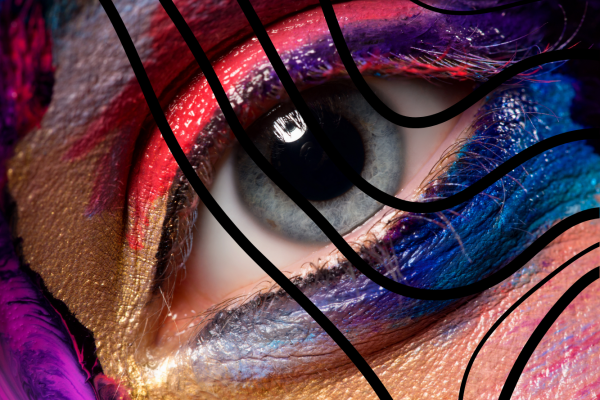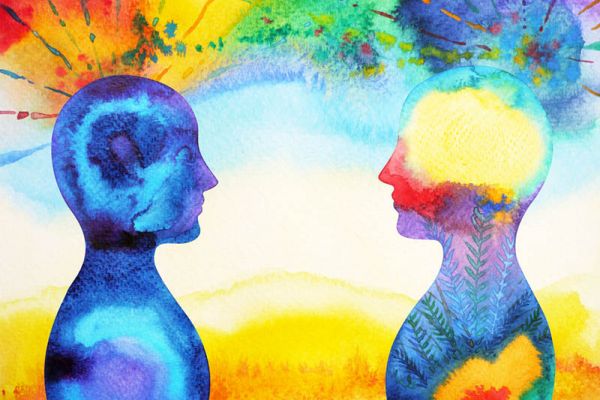🎨 Drawing Your Past, Present, and Future Self: An Art Therapy Exercise for Self-Growth
Posted at: 02 Jun 2025 /
Art therapy exercises are powerful tools for self-reflection, emotional healing, and mental health support. One meaningful prompt gaining popularity is drawing your past, present, and future self—a guided art activity that uses symbolic self-portraits to explore your personal timeline.
Whether you're working with an art therapist or practicing self-guided art therapy at home, this activity can help you visualize your growth, acknowledge your struggles, and reconnect with your inner self.
🕰️ Why This Art Therapy Exercise Matters
Life moves fast, and we rarely pause to notice how far we've come. This creative self-reflection prompt encourages you to:
-
Process past experiences through visual storytelling
-
Connect with your present emotions and identity
-
Set intentions and visualize your future self
This type of expressive arts therapy supports both mental health awareness and personal growth—whether used in clinical settings or as a tool for emotional wellness at home.
✍️ How to Draw Your Timeline of Self
Materials Needed:
-
Art journal, sketchbook, or 3 sheets of paper
-
Pens, markers, colored pencils, paint, or collage materials
-
A quiet space for reflection and creativity
Step-by-Step Instructions:
1. The Past Self (Healing Through Art)
Reflect on your younger self or a formative time in your life. Consider:
-
What did I believe about myself?
-
What emotions were present?
-
Are there colors, symbols, or images that represent this version of me?
Create an image or symbolic self-portrait to represent your past self. You can draw a face, a scene, or something abstract—it’s about meaning, not perfection.
2. The Present Self (Mindful Art Expression)
Turn your attention to who you are today. Ask yourself:
-
What am I carrying from my past?
-
What are my current emotions, challenges, or strengths?
-
How do I see myself right now?
Use this as an opportunity for mindfulness-based art therapy—a chance to check in with your emotional state through color, shape, and form.
3. The Future Self (Visualizing Growth)
Look forward. Think about:
-
Who do I want to become?
-
What qualities or goals do I envision for myself?
-
What does healing, peace, or success look like for me?
Let this be your most hopeful image—your future self-portrait should reflect your inner vision and dreams for personal development.
🌱 Tips for Deep Self-Reflection
-
Use a mental health journal to write reflections for each self-portrait.
-
Incorporate symbolic imagery like animals, plants, or weather to represent feelings.
-
Allow imperfection—this is expressive art, not fine art.
-
Repeat this exercise over time to track growth and changes in self-perception.
🧠 Therapeutic Benefits of Drawing Your Timeline
This self-guided prompt combines the benefits of art therapy for trauma, inner child healing, and future self visualization. It can help with:
-
Building self-awareness
-
Practicing self-compassion
-
Reducing anxiety and stress
-
Supporting emotional healing and resilience
Whether you're using this in a creative journaling practice, a therapy session, or as part of your personal healing journey, it’s a gentle way to reconnect with your inner self.
🖼️ Final Thoughts: Your Story Is Still Unfolding
Your timeline of self is a personal narrative told through color, image, and emotion. It honors where you’ve been, grounds you in the present, and lights the way forward.
You are a work in progress—and that’s a beautiful thing.
So take a deep breath, gather your materials, and begin this transformative art therapy activity today.
Introduction
In a world where stress and emotional struggles have become commonplace, finding effective ways to heal and cope is essential. One such transformative approach is art therapy—a creative and evidence-based form of therapy that utilizes artistic expression to promote emotional well-being. In this blog, we will delve into the world of art therapy, exploring its history, benefits, and real-life applications. So, let's pick up our paintbrushes and embark on a journey of healing through art.
What is Art Therapy?
Art therapy is a therapeutic practice that encourages individuals to express their thoughts, feelings, and emotions through various artistic mediums. It is facilitated by licensed art therapists who possess a deep understanding of the connection between art and the human psyche. Through the creative process, art therapy helps individuals explore their inner world, resolve conflicts, and develop healthier coping mechanisms.
The History of Art Therapy
The roots of art therapy can be traced back to the early 20th century, where psychiatrists and psychologists began recognizing the therapeutic potential of art. It wasn't until the mid-20th century that art therapy emerged as a distinct discipline, thanks to the pioneering work of Margaret Naumburg and Edith Kramer. Since then, art therapy has gained recognition as an effective tool in psychotherapy and counseling.
Benefits of Art Therapy
-
Emotional Expression and Healing: Art therapy provides a safe and non-verbal outlet for expressing emotions that may be difficult to articulate verbally. Creating art allows individuals to release emotional tension, leading to catharsis and a sense of relief.
-
Stress Reduction: Engaging in artistic activities triggers the production of endorphins, the brain's "feel-good" chemicals. This promotes relaxation, reducing stress and anxiety levels.
-
Enhancing Self-Awareness: Art therapy encourages introspection, enabling individuals to gain insights into their thoughts, behaviors, and underlying emotions. This heightened self-awareness can lead to personal growth and a better understanding of oneself.
-
Cognitive Stimulation: Creating art involves problem-solving, critical thinking, and visual-spatial skills, stimulating various cognitive functions and promoting mental agility.
-
Building Resilience: Through art therapy, individuals can confront and process past traumas, leading to increased resilience and the ability to cope with life's challenges.
Real-Life Applications of Art Therapy
-
Working with Trauma Survivors: Art therapy has proven to be effective in helping survivors of trauma, such as veterans, survivors of abuse, and individuals experiencing post-traumatic stress disorder (PTSD).
-
Children and Adolescents: Art therapy is particularly beneficial for children and adolescents who may find it challenging to express themselves verbally. It aids in addressing behavioral issues, building self-esteem, and promoting emotional development.
-
Mental Health and Wellness: Art therapy is widely used in various mental health settings, including hospitals, counseling centers, and addiction treatment facilities, to support individuals in managing depression, anxiety, and other mental health concerns.
Sources:
-
Malchiodi, C. A. (2019). The Art Therapy Sourcebook. McGraw-Hill Education.
-
American Art Therapy Association (AATA). (n.d.). About Art Therapy. Retrieved from https://arttherapy.org/about-art-therapy/
-
Reynolds, F. (Ed.). (2012). The Handbook of Art Therapy. Routledge.
-
Rubin, J. A. (2016). Approaches to Art Therapy: Theory and Technique. Routledge.
Conclusion
Art therapy is a powerful and versatile form of therapeutic intervention that harnesses the creative process to promote healing and emotional well-being. Through artistic expression, individuals can tap into their innermost emotions, process trauma, and develop coping strategies. As art therapy continues to gain recognition and popularity, its positive impact on mental health and overall well-being becomes increasingly evident. So, why not unleash your creative spirit and explore the transformative world of art therapy today?




